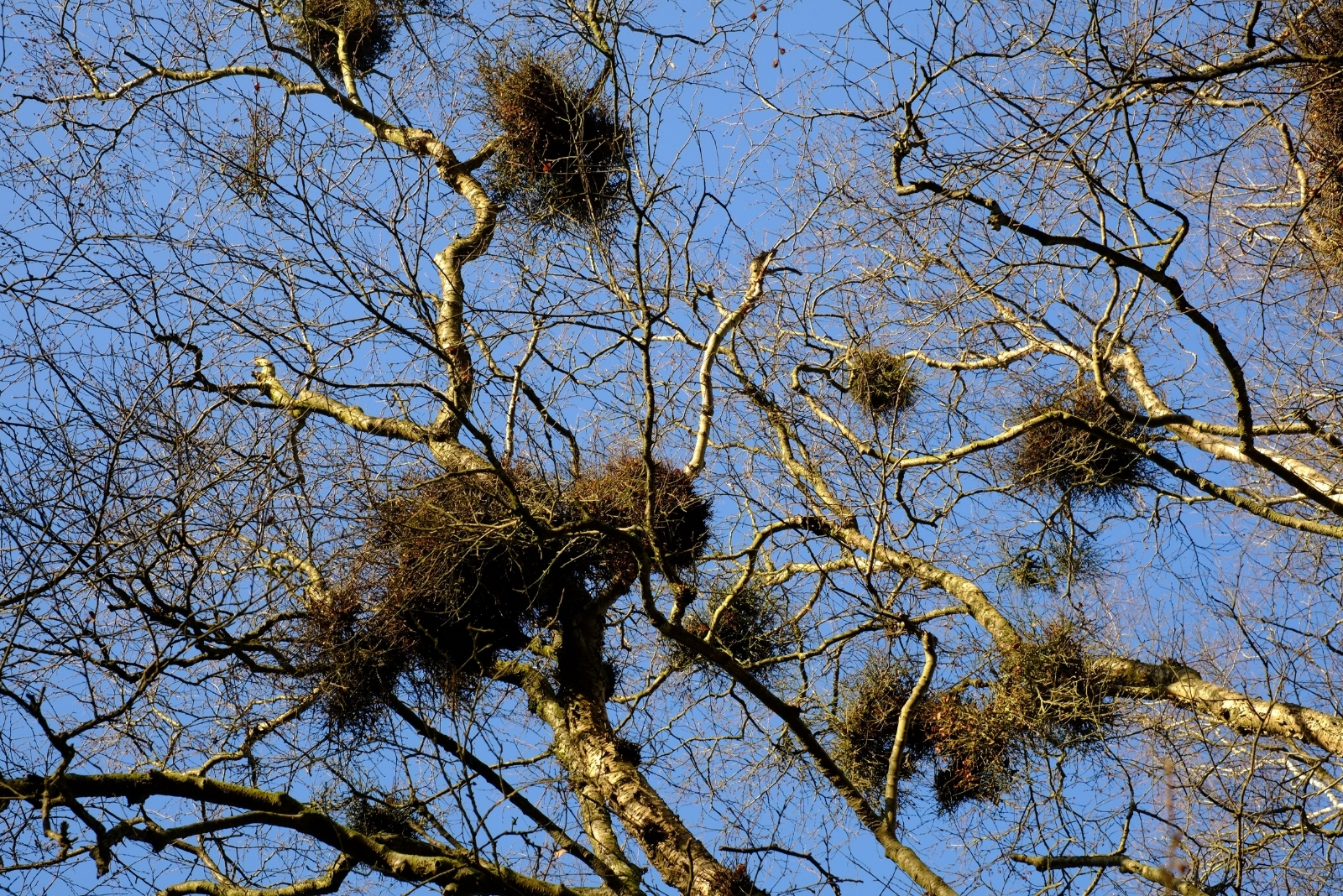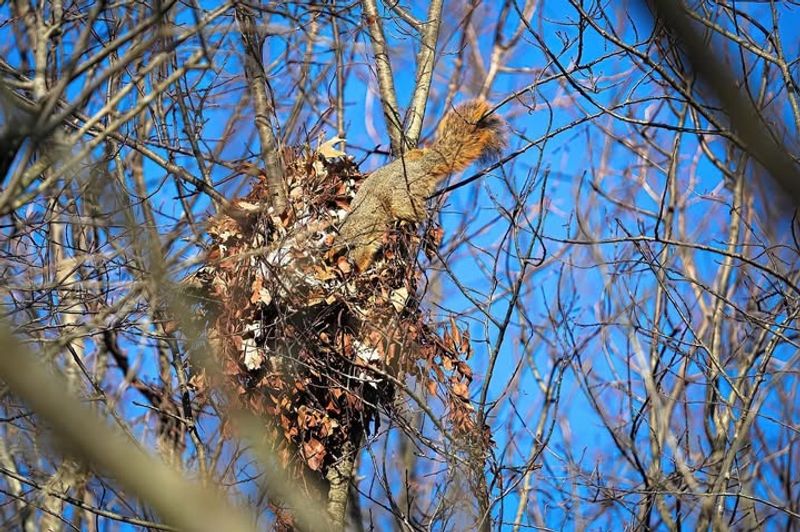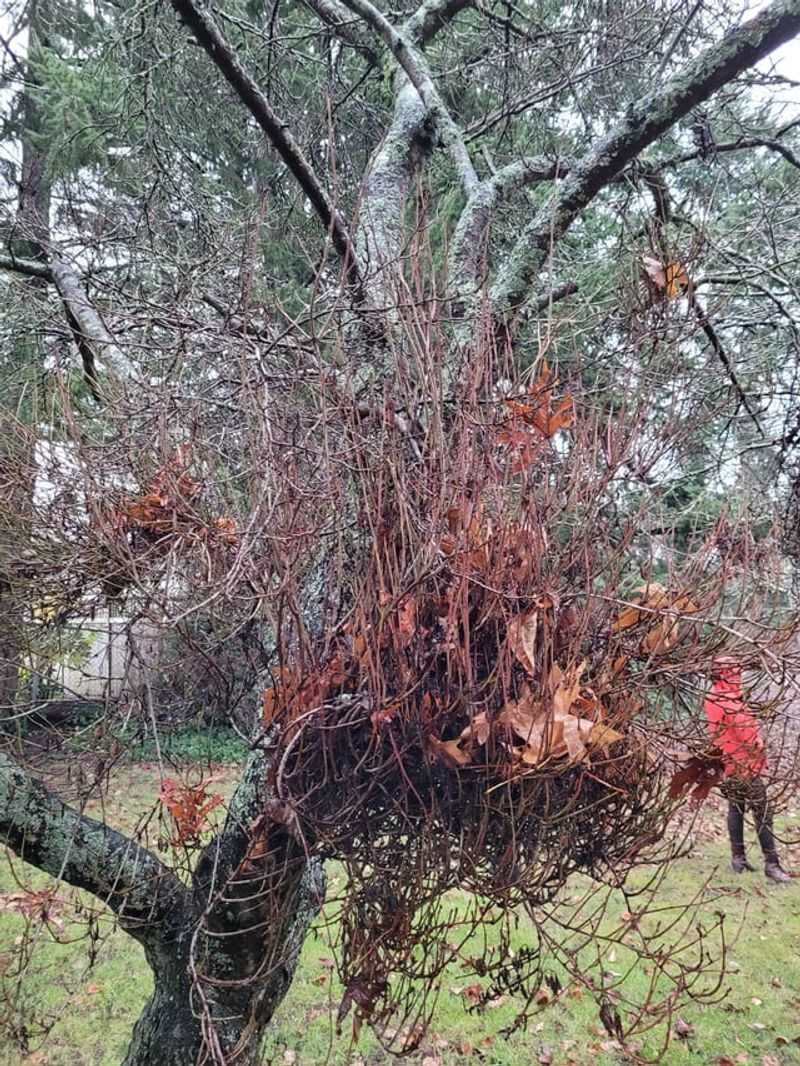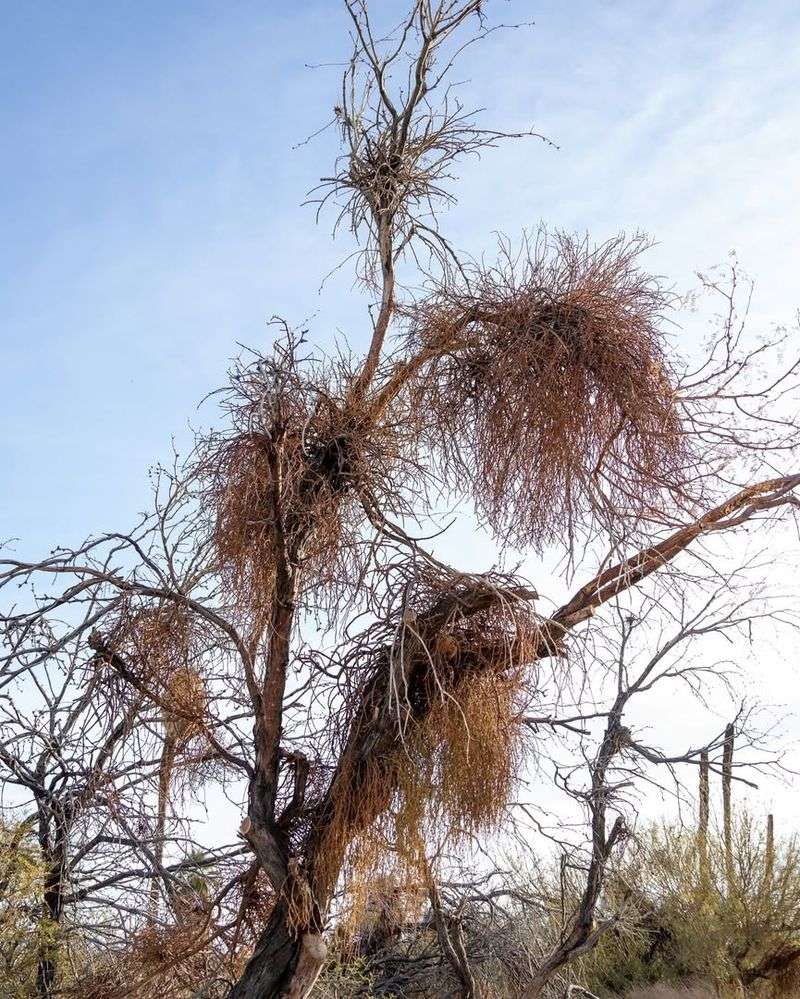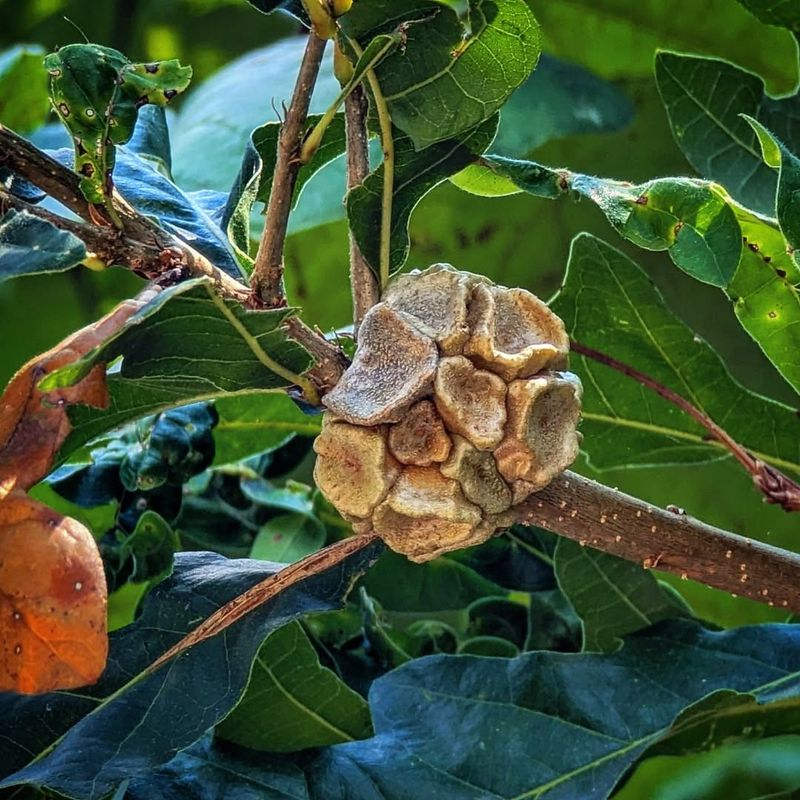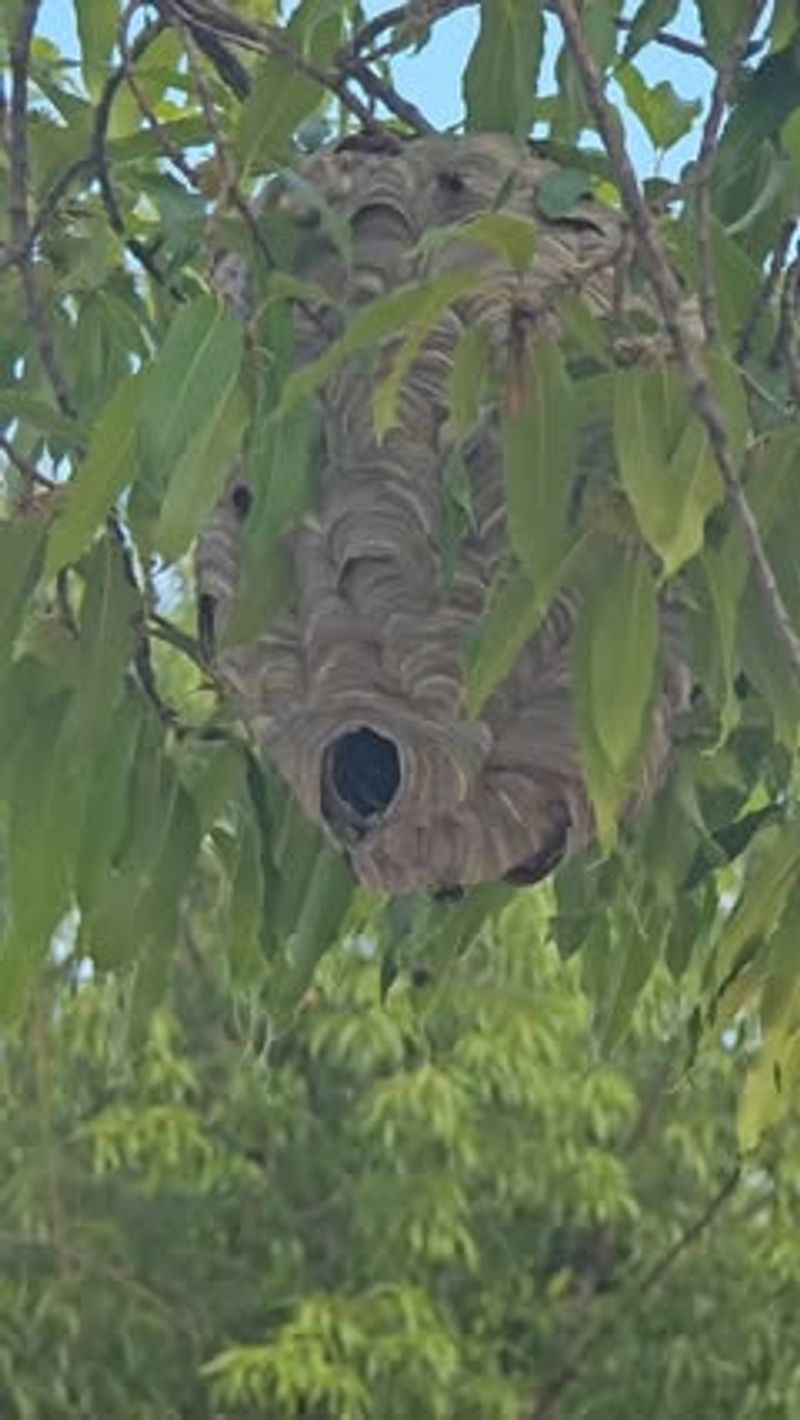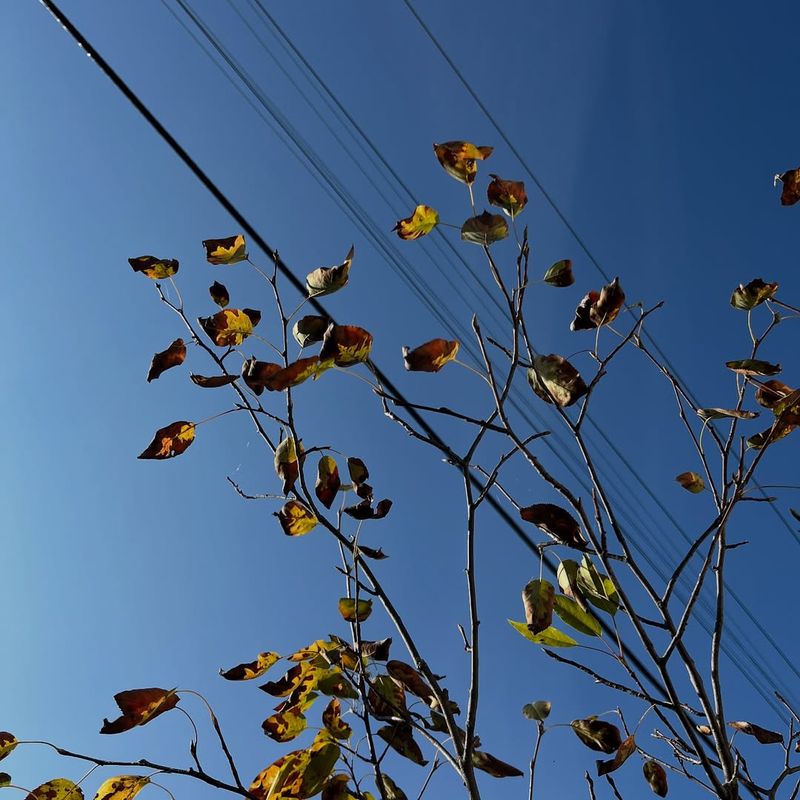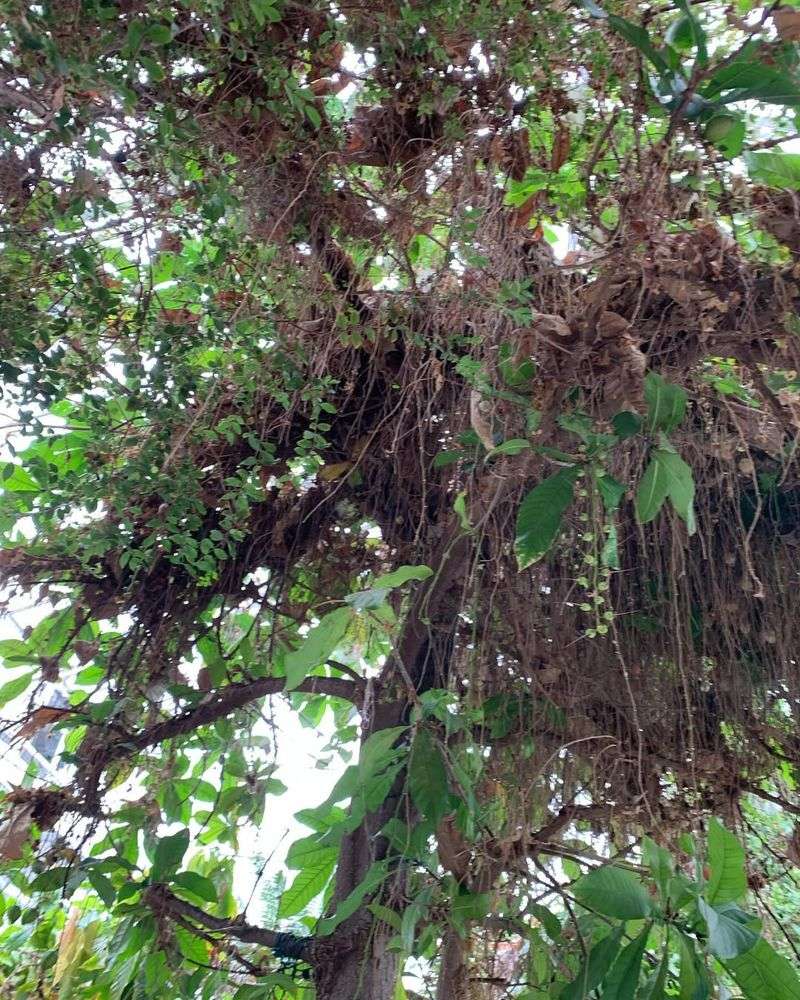Spying a ball of leaves in a Virginia tree can make anyone think there’s a nest inside. But not everything dangling in a tree is home to birds.
These odd leaf clusters have a story all their own, and they can reveal fascinating things about your local ecosystem. Once you know what they really are, you’ll see your trees in a whole new way.
1. Squirrel Dreys Are the Real Culprits
Squirrels build their homes, called dreys, using twigs, leaves, and moss woven tightly together. Unlike bird nests, dreys are much larger and rounder, often the size of a basketball.
Gray squirrels are common throughout Virginia, especially in neighborhoods with mature oak and hickory trees. They construct multiple dreys throughout the year for sleeping, raising babies, and escaping harsh weather.
Bird nests tend to be smaller, cup-shaped, and abandoned after breeding season, while squirrel dreys remain active year-round as permanent residences.
2. Witches’ Broom Disease Creates Dense Growth
A plant disease called witches’ broom causes abnormal twig and leaf clusters that look eerily like nests from below. Fungi, viruses, or insects trigger this unusual growth pattern in trees.
Many Virginia trees, including maples and cherries, develop these dense, tangled masses that can fool even experienced nature watchers. The clusters grow tighter and bushier each season, creating perfectly round shapes.
Unlike actual nests, witches’ broom formations are permanently attached and won’t blow away during storms or high winds across the state.
3. Mistletoe Clumps Fool Many Observers
Mistletoe is a parasitic plant that grows in round, bushy clumps high in tree branches throughout Virginia forests and yards. Its evergreen leaves stay thick and green year-round, unlike deciduous trees.
People often mistake these rounded clusters for bird nests because they sit prominently in bare winter branches. Mistletoe actually steals water and nutrients from host trees while creating its distinctive ball shape.
Bird nests disappear or deteriorate quickly, but mistletoe keeps growing bigger each year, becoming more noticeable as it spreads across Virginia’s landscape.
4. Leaf Galls Form Unusual Structures
Tiny insects like wasps and mites cause trees to produce growths called galls, which can cluster together into large, ball-shaped formations. Oak trees across Virginia are especially prone to developing these peculiar structures.
Galls protect developing insect larvae inside while the tree responds to chemical signals by creating extra plant tissue. Some gall clusters grow so dense they resemble carefully woven nests from a distance.
Real bird nests have visible sticks and soft lining materials, while galls are solid plant tissue that remains firmly attached to branches throughout Virginia’s seasons.
5. Abandoned Wasp and Hornet Nests
Large paper wasp and bald-faced hornet nests often get mistaken for bird nests when spotted in Virginia trees. These gray, papery structures can grow as big as basketballs during summer months.
By late fall, after the first hard frost, hornets abandon their nests and die off, leaving behind empty paper shells. Wind and weather gradually tear away the outer layers, exposing a honeycomb interior structure.
Bird nests use natural materials like twigs and grass, while hornet nests are made from chewed wood fibers that create distinctive gray paper walls visible throughout Virginia winters.
6. Vine Tangles Create Nest-Like Shapes
Wild grapevines and Virginia creeper vines twist together in tree canopies, forming dense, rounded masses that mimic bird nests perfectly. Wind wraps the vines tighter over time, creating increasingly compact balls.
Throughout Virginia’s forests and suburban areas, these vine tangles accumulate fallen leaves that get trapped inside, making them look even more nest-like from ground level. Some grow several feet across.
Unlike bird nests that sit in tree forks, vine tangles wrap around multiple branches and stay permanently attached, growing heavier and more visible as Virginia seasons change.
7. Accumulated Leaf Debris Lodges in Branches
Strong winds during Virginia storms blow leaves, twigs, and plant debris high into tree branches where they get stuck in natural pockets. Over time, more material accumulates, creating surprisingly large, round clumps.
Tree forks and dense branch clusters act like collection baskets, trapping autumn leaves that compact together through rain and snow. Spiderwebs and moisture help bind everything into solid-looking balls.
Bird nests show intentional construction with woven materials, while debris piles are random jumbles that shift and fall apart during heavy Virginia rainstorms or winter weather conditions.

